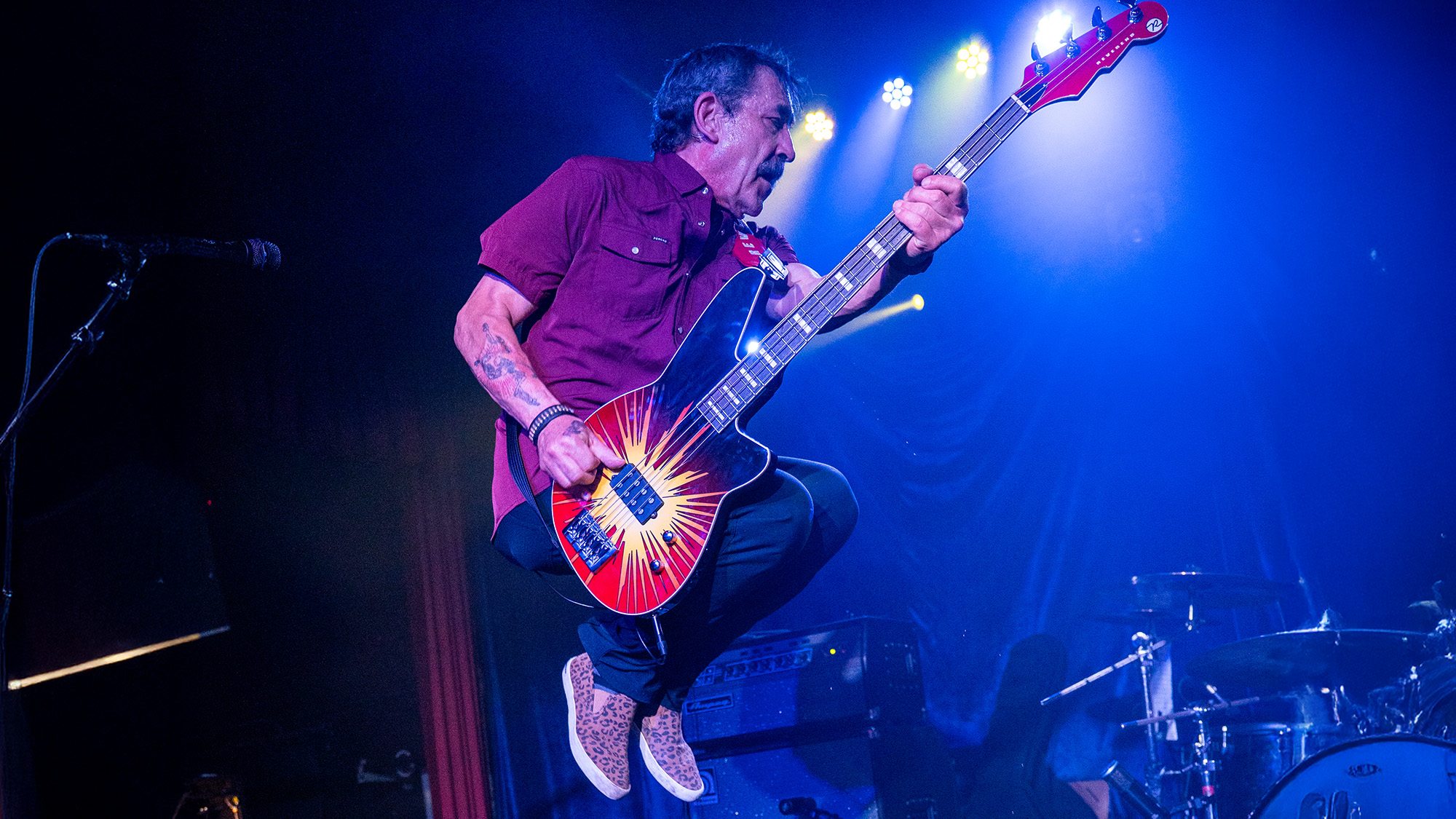
In this article, we look at a virtual pedalboard signal path, take a chunk of it, explain what it is and figure out how to use it for bass guitar!
Here, we’re looking at equalization, or EQ. There’s a lot to say on this subject, so let’s focus on the three most popular types of EQ that you’ll find on amps and pedals: graphic, semi-parametric and passive tone stack.
What is equalization?
An equalizer is just a set of filters that have the ability to make areas of the audiospectrum more prominent by boosting levels within those areas, or conversely, decreasing those levels toreduce their prominence.
Why do we need it?
Most people can hear sounds in afrequency range of 20Hz to about 20KHz - equivalent to, say, the sound of thunder all the way up to the high-pitched squeal of a dog whistle. The question is, which of these frequencies do you need in your bass tone?
EQ will help you with that. For example, we can attenuate (reduce) the high frequencies that exist around 2 to 8KHz if the top end sounds harsh, or boost the low frequencies around 100Hz to help make that kick drum slam. We can also attenuate specific frequencies that may overpower a mix, or boost them to bring life to an otherwise thin sound.
Okay, I've got a pedal with an equalizer on it. What the hell do all those knobs do?
Input/Output level
These controls set up the optimum levelin and out of your pedal.
All the latest guitar news, interviews, lessons, reviews, deals and more, direct to your inbox!
Graphic, with fixed bands
Often laid out with sliders of fixed frequency centers - also known as potentiometers - this EQ design features cut and boost from a middle neutral position. The filter centers are usually spaced evenly across the frequency range. Expect to see three to 10 bands, with upto 18dB of cut and boost.
Semi-parametric, with adjustable bands
This is my favorite form of equalization. Rather than deploying rows of filters that are fixed by the equipment manufacturer, this method uses a control to cut and boost, while a second control adjusts the centre frequency of the filter.
You may see a semi-parametric filter used in conjunction with fixed frequency controls, offering the best of both worlds. Fully parametric equalizers will also have a method forchanging the width of the spectrum band that the filter acts upon, known as the Quality or Q control.
Don’t over-boost frequencies below 40Hz, the majority of bass cabinets on the market can’t do anything with those subsonic frequencies anyway.
Tone stack
Whereas the above designs use active circuitry blocks to separately act upon theincoming signal in bands, a passive tone stack does not. The whole signal passes through a passive network of components and the action of all the tone knobs affect each other interactively. A lesser known feature of the tone stack worth pointing out is that the EQ curve with all knobs on 3, will be different to all being on, say, 8 – there’s a noticeable change in tone after balancing the overall volume.
Suggested settings
Do an internet search for smiley face EQ: this, coupled with speaker cabinets that have a naturally scooped sound (bumped highs and lows, reduced mids), is the easiestway to make your low strings overwhelm the higher ones. Try to avoidthis. The most important frequencies for bass guitar are between 80Hz and 300Hz.
The 100Hz region is great for slap punch, while lifting around800Hzcan bring out character, and 4 to 8KHz is great for pick attack sounds. Don’t over-boost frequencies below40Hz, the majority of bass cabinets on the market can’t do anything with those subsonic frequencies anyway.
What else can I do with my equalizer?
Use your EQ pedal as a solo boost. Pull the very low frequencies back a bit and boost the mids to cut through when you need to be heard. Middle frequencies are your friend! You can also use your EQ pedal as a second channel: dial in a different tone for when you switch between pick,slap or fingerstyle.
